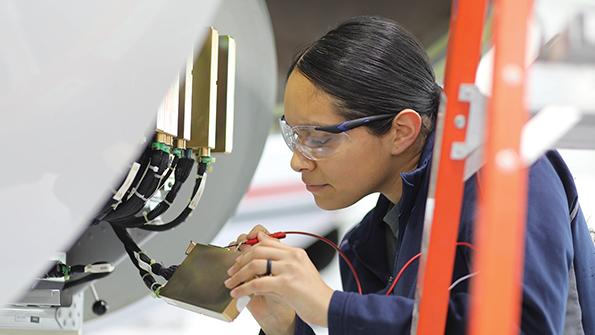Opinion: MRO Should Rethink Digital Recruiting Methods

The long-brewing technical workforce crisis has landed. The general media and public are now seeing negative stories about staffing crunches in aviation, as if the industry was immunized from the challenge that is international staffing demand.
We are behind the curve in attracting talent, but it is never too late to correct course. Doing so means recognizing our inherent advantages—opportunities for almost anyone with technical knowledge and desire to learn and grow—while also recognizing how the industry tends to squander them due to slowness to adapt and reliance on established recruitment and career development models. Why is the industry slow to embrace new technology and letting its “uniqueness” inhibit new players from advancing?
Case in point: The U.S. Department of Labor connects tasks and skills to careers in more than 900 fields through mynextmove.org. With a simple search, a student or job seeker can browse employment fields. Veterans can use their specialty code (MOS or AFSC) to search civilian jobs that equate to their uniformed positions.
We can use the experience of those seekers—many of whom we want to employ—to see how we are missing important connections. Go to the site and use the search features as would someone interested in hands-on work but who does not have a predetermined interest in aviation.
Let us say one of our imagined test cases studied electrical fundamentals and searched “electrician.” No aviation careers would appear in the top 20 fields displayed in their search. Suppose another can weld, so they look for careers by searching for “welding.” They are unlikely to learn about aviation prospects because there are no industry jobs in the search results.
In our experiment, these two candidates are lost. Though the “My Next Move” mechanism only introduces career fields (it does not connect to job openings), it highlights a key failure to portray aerospace competencies among and between similar work. If a search such as the one described above included the term “sheet metal,” it would return an actual hit for “Aircraft Structure, Surfaces, Rigging & Systems Assemblers.” What is interesting about that result is how much of the description, including the needed knowledge, skills and abilities, contains nothing about aviation.
Why does this matter? It shows us how to present aviation skill sets in a way that makes sense to the general public. As a colleague explained to ARSA: “If you post a job for an avionics technician, you will get a few hits. If you post one for an IT specialist or an electrician—holding many of the skills needed to perform avionics work—you can actually find good candidates.”
The point is that aviation careers, broad and diverse as they are, do not appear alongside equally skilled trades in the minds and tools of uninitiated job seekers. It is never too late to change aviation’s way of describing required skills to attract the best talent.
Brett Levanto is vice president of operations of Obadal, Filler, MacLeod & Klein, managing firm and client communications in conjunction with regulatory and legislative policy initiatives. He provides strategic and logistical support for the Aeronautical Repair Station Association.
The views expressed are not necessarily shared by Aviation Week.




